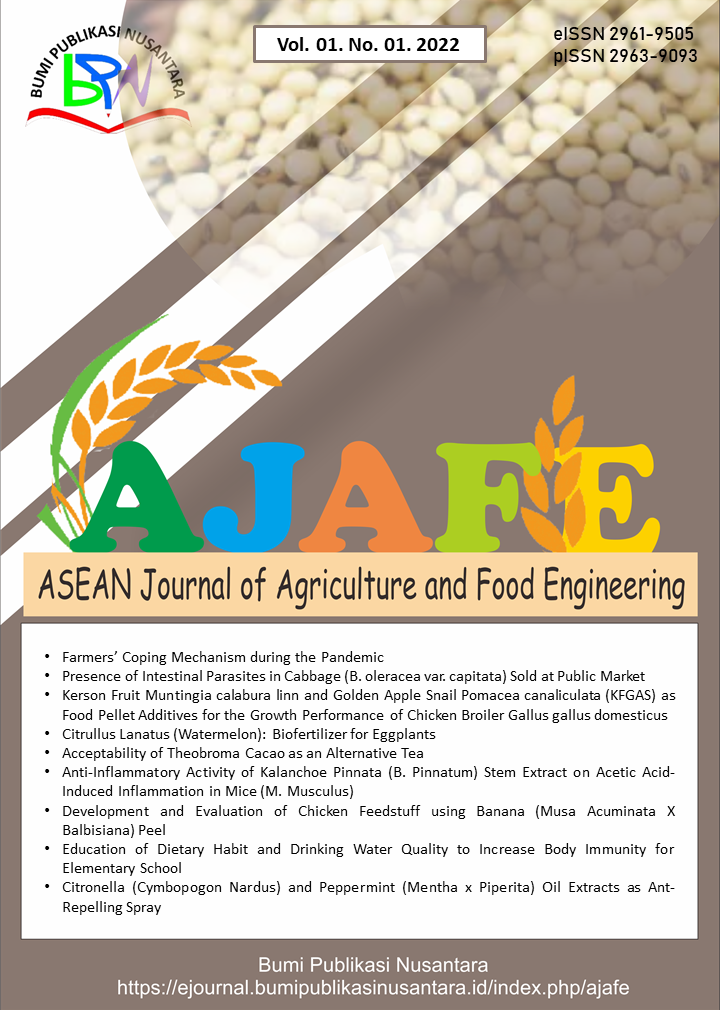Citronella (Cymbopogon Nardus) and Peppermint (Mentha x Piperita) Oil Extracts as Ant-Repelling Spray
 ), Hanz Alecz Q. Dasmariñas(2), Jay Marc M. Nangcas(3), Myra M. Luna(4), Seth Nahzier S. Perocho(5), Anamarie Valdez(6), Jerick E. Fegarido(7),
), Hanz Alecz Q. Dasmariñas(2), Jay Marc M. Nangcas(3), Myra M. Luna(4), Seth Nahzier S. Perocho(5), Anamarie Valdez(6), Jerick E. Fegarido(7),
(1) Sultan Kudarat State University
(2) Sultan Kudarat State University
(3) Sultan Kudarat State University
(4) Sultan Kudarat State University
(5) Sultan Kudarat State University
(6) Sultan Kudarat State University
(7) Sultan Kudarat State University
 Corresponding Author
Corresponding Author
Abstract
Keywords
References
Debboun, M., and Strickman, D. (2013). Insect repellents and associated personal protection for a reduction in human disease. Medical and Veterinary Entomology, 27(1), 1-9.
Faria, J. M., Barbosa, P., Vieira, P., Vicente, C. S., Figueiredo, A. C., and Mota, M. (2021). Phytochemicals as biopesticides against the pinewood nematode Bursaphelenchus xylophilus: A review on essential oils and their volatiles. Plants, 10(12), 2614.
Janzen, D. H. (1966). Coevolution of mutualism between ants and acacias in Central America. Evolution, 20(3), 249-275.
Schneck, C. D., Miklowitz, D. J., Calabrese, J. R., Allen, M. H., Thomas, M. R., Wisniewski, S. R., Miyahara, S., Shelton, M. D., Ketter, T. A., Golberg, J. F., and Sachs, G. S. (2004). Phenomenology of rapid-cycling bipolar disorder: data from the first 500 participants in the systematic treatment enhancement program. American Journal of Psychiatry, 161(10), 1902-1908.
Sutherst, R. W., and Maywald, G. (2005). A climate model of the red imported fire ant, Solenopsis invicta Buren (Hymenoptera: Formicidae): implications for invasion of new regions, particularly Oceania. Environmental Entomology, 34(2), 317-335.
Article Metrics
Abstract View : 3298 times
: 3298 times Download : 2546 times
Download : 2546 times
Refbacks
- There are currently no refbacks.
Copyright (c) 2022 Yayasan Bumi Publikasi Nusantara

This work is licensed under a Creative Commons Attribution-ShareAlike 4.0 International License.



_publication_ethics.png)



